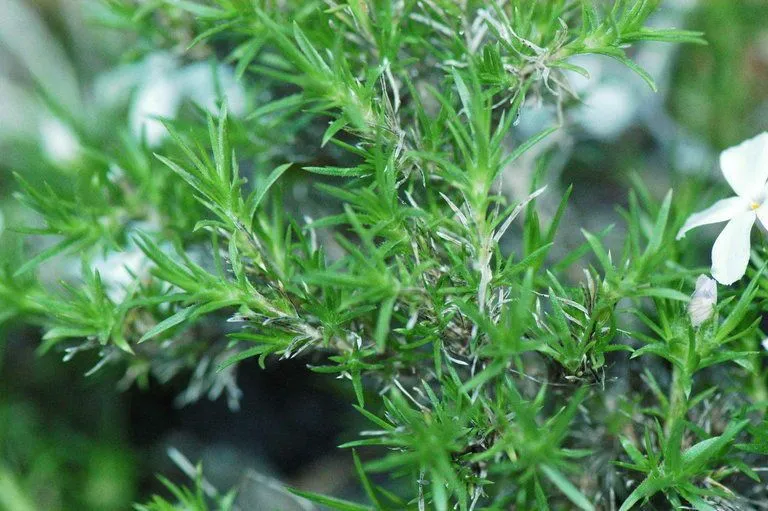
Author: Benth.
Bibliography: Pl. Hartw.: 325 (1849)
Year: 1849
Status: accepted
Rank: species
Genus: Phlox
Vegetable: False
Observations: S. Oregon, WNW. California, NW. Nevada
Spreading phlox, scientifically known as Phlox diffusa, is a perennial plant belonging to the Polemoniaceae family. Identified and named by the botanist George Bentham in 1849, this distinct species captures the essence of diverse American landscapes.
Characteristically low-growing, spreading phlox forms attractive, dense mats that beautifully hug the ground. Its delicate, star-shaped flowers are typically pale pink to a vibrant purple or even white depending on the regional variations, making it a visual delight during its blooming period. These florals also serve as an excellent nectar source for various pollinators including bees and butterflies.
Spreading phlox thrives in the rugged terrains of southern Oregon, western-northwestern California, and northwestern Nevada. Its adaptability to rocky, well-drained soils and its resilience to sometimes harsh conditions make it a valuable component of native plant gardens and restoration projects. Despite its hardy nature, it prefers sunny spots where it can receive ample sunlight to boost its growth and flowering potential.
The foliage of Phlox diffusa is equally fascinating, predominantly consisting of small, needle-like leaves that give off a soft green hue, providing a lush carpet effect that complements its enchanting blooms. This low-maintenance plant requires minimal care once established, making it an ideal choice for gardeners seeking to introduce natural beauty with minimal effort.
Spreading phlox not only contributes aesthetically to its environment but also plays a significant role in local ecosystems. It helps stabilize soil, preventing erosion in its native rocky habitats, and supports the life cycles of various native insects and other wildlife.
In summary, spreading phlox is a testament to nature’s ingenuity, showcasing vibrant flowers and robust foliage while thriving in some of the more challenging landscapes of the western United States. Its charm and resilience make Phlox diffusa an invaluable native species worth preserving and celebrating.
Eng: spreading phlox, mat phlox
Fra: phlox diffus
En: Spreading phlox, Mat phlox
Fr: Phlox diffus
Taken May 30, 2022 by Philippe Lopez (cc-by-sa)
Taken Jun 7, 2022 by Eric Lippe (cc-by-sa)
Taken Mar 15, 2021 by Gabriel Hankes (cc-by-sa)
Taken May 3, 2019 by Szeles Kim (cc-by-sa)
Taken May 13, 2021 by randa keys (cc-by-sa)
Taken Apr 29, 2012 by EOL − Gary A. Monroe (cc-by-nc)
Taken Mar 1, 2016 by EOL − Gerald and Buff Corsi (cc-by-nc-sa)
Taken Mar 1, 2016 by EOL − Gerald and Buff Corsi (cc-by-nc-sa)
Taken Nov 22, 1999 by EOL − William R. Hewlett (cc-by-nc-sa)
Taken Oct 16, 1998 by EOL − Charles Webber (cc-by-nc-sa)
Taken May 13, 2021 by Jimmy feincoeur (cc-by-sa)
Taken May 13, 2021 by Jimmy feincoeur (cc-by-sa)
Taken Jan 1, 1900 by EOL − Cooper, G.A. (cc-by-nc-sa)
Taken Nov 13, 2002 by EOL − Robert Potts (cc-by-nc-sa)
Taken Nov 13, 2002 by EOL − Robert Potts (cc-by-nc-sa)
Taken Jan 1, 1900 by EOL − Cooper, G.A. (cc-by-nc-sa)
Growth form>: Single Crown
Growth habit>: Subshrub, Forb/herb
Growth rate>: Slow
Ph maximum: 8.5
Ph minimum: 6.5
Family: Myrtaceae Author: (F.Muell.) K.D.Hill & L.A.S.Johnson Bibliography: Telopea 6: 402 (1995) Year: 1995 Status:…
Family: Rubiaceae Author: Pierre ex A.Froehner Bibliography: Notizbl. Bot. Gart. Berlin-Dahlem 1: 237 (1897) Year:…
Family: Sapindaceae Author: Koidz. Bibliography: J. Coll. Sci. Imp. Univ. Tokyo 32(1): 38 (1911) Year:…
Family: Asteraceae Author: A.Gray Bibliography: Pacif. Railr. Rep.: 107 (1857) Year: 1857 Status: accepted Rank:…
Family: Fabaceae Author: Medik. Bibliography: Vorles. Churpfälz. Phys.-Ökon. Ges. 2: 398 (1787) Year: 1787 Status:…
Family: Aspleniaceae Author: (Cav.) Alston Bibliography: Bull. Misc. Inform. Kew 1932: 309 (1932) Year: 1932…